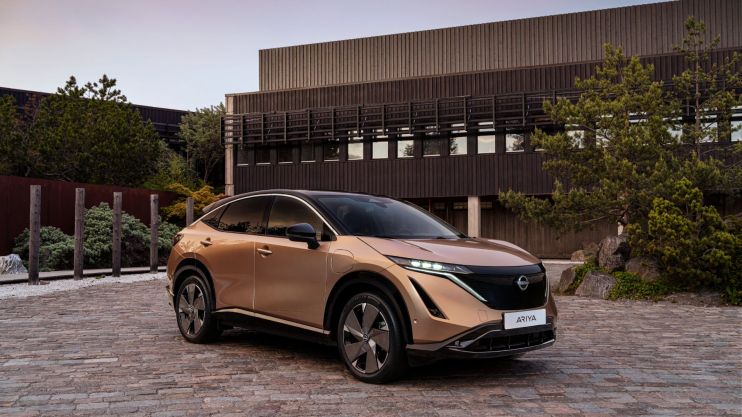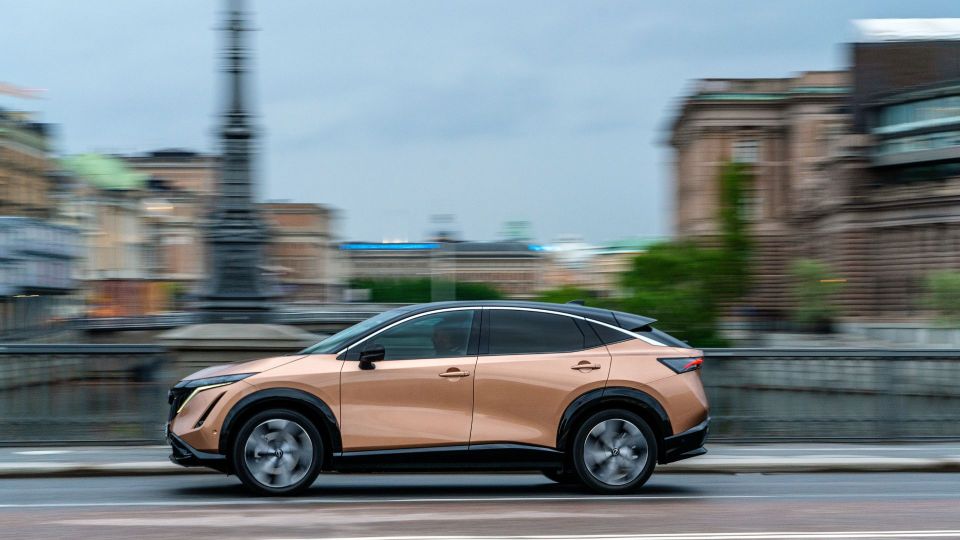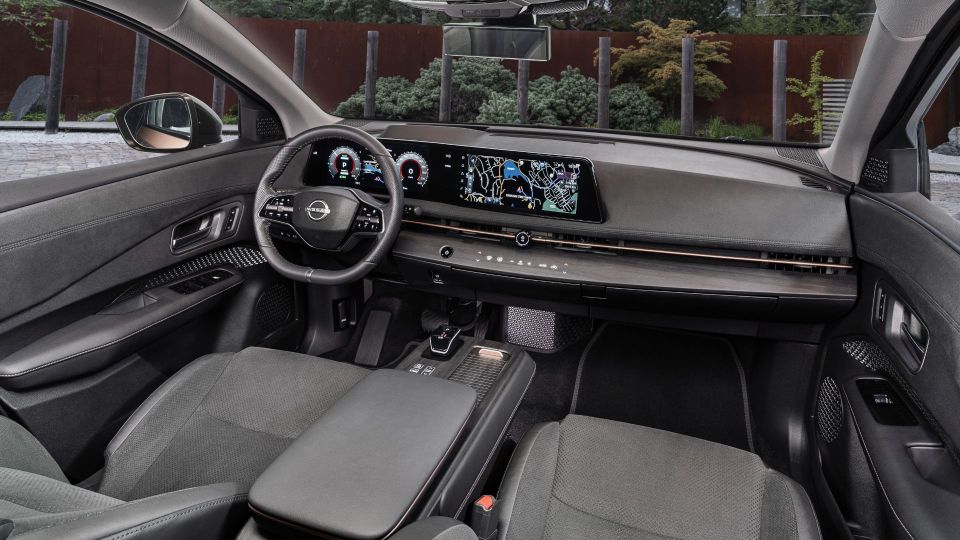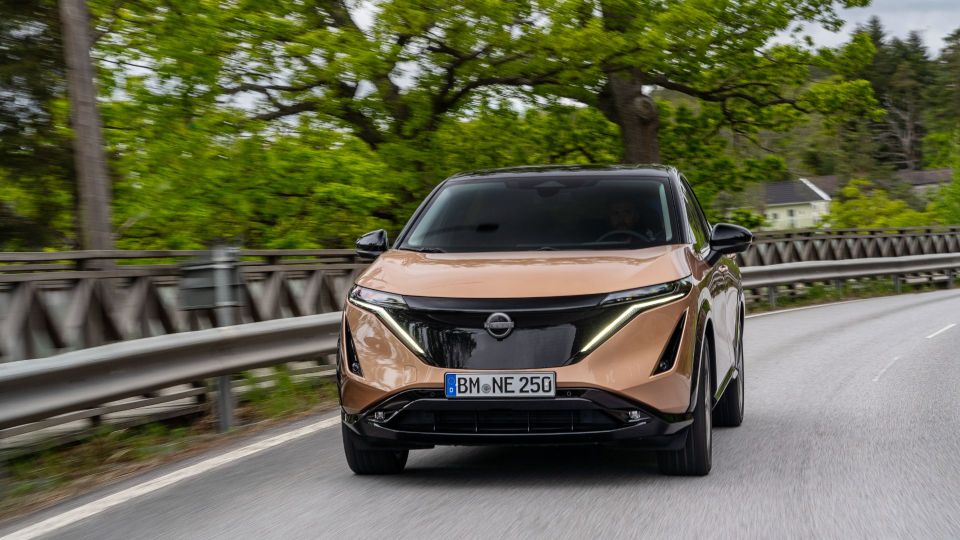Nissan Ariya review: Big in Japan

Two trends have dominated the automotive agenda in recent years. One is the shift from hatchbacks and saloons to crossovers and SUVs. The other is a (soon to be mandated) move from internal combustion engines to electric cars. Nissan has been at the forefront of both.
The Nissan Qashqai arguably invented the crossover in 2006, and has been the market leader ever since. And the Nissan Leaf, first launched in 2010, was the torchbearer for affordable electric cars. It was the best-selling EV in history until the Tesla Model 3 came along.
The new Ariya combines Nissan’s two areas of expertise into one package. Yes, it’s an electric crossover. It also succeeds the iconic, supercar-slaying GT-R, recently killed off due to drive-by noise rules, as Nissan’s de facto flagship. Let’s try not to dwell on that…
Taking on Tesla

To be clear, the Ariya isn’t simply an electric Qashqai. Based on a fresh EV platform shared with the Renault Megane, it’s pitched much further upmarket: taking on the Tesla Model Y, Ford Mustang Mach-e and Kia EV6.
Prices start at £43,845 for the front-driven 63kWh version, rising to £56,290 for the awkwardly-spelled e-4ORCE, which boasts a 87kWh battery and all-wheel drive.
With clean surfacing, flat-faced alloy wheels and a tapering, coupe-style roof, the Ariya does a good job of disguising its bulk.
It is very colour-sensitive, though. In the rose gold seen here (officially called Akatsuki Copper), it looks sleek and futuristic. But darker hues seem to smother the details, leaving an amorphous Tesla-style blandness.
Minimalist and modern

In contrast to the tech-fest GT-R (sorry, mentioned it again), the Ariya’s cabin takes a less-is-more approach, blending rich materials with minimalist design. There are big screens, copper accents and haptic controls that shine through the dashboard’s wood veneer, plus a flat floor to boost interior space. It’s all very premium. The rear bench can fit three adults in comfort, although the 466-litre boot carries less luggage than a Qashqai.
Looking at the numbers, the Ariya is competitive but not class-leading. The 63kWh model I drove hits 62mph in 7.5 seconds and has an official range of 250 miles. Upgrading to the heavier 87kWh battery adds 0.1 seconds to the sprint time, but extends range to 329 miles. The top-spec e-4ORCE manages 5.7 seconds and 310 miles respectively. Maximum charging speed is 130kW, with a full fill-up via a 7.4kW home wallbox taking 10 hours, or 13.5 hours for 87kWh versions.
Like any electric SUV, the Ariya proves refined and easy to drive. Performance in this entry-level model won’t worry a Tesla, but the ever-ready torque of the electric motor makes for relaxed progress.
Press the ‘e-Pedal Step’ button and the stronger retardation means you can drive with one pedal around town, plus the Ariya will creep forward in traffic like a conventional automatic car.
A little extra Qash

Nissan says the e-4ORCE has the ‘genes of a GT-R’ (oops, and again!), but I’ll have to reserve judgement on that. Consider me sceptical. What’s clear is that the Ariya gets the basics right, with near-perfect weight distribution, progressive steering and a composed attitude to corners. Its ride is a bit less forgiving than you’d expect, however; blame those giant 20-inch wheels.
One potential plus is the Ariya’s ability to tow – anything up to 1,500kg for the e-4ORCE model – which is a rarity among electric cars. If you own a caravan/horsebox/boat (delete as appropriate), that might put it on your shortlist.
Otherwise, the Ariya will appeal most to those trading up from a Qashqai or Leaf, sold on its crossover practicality and EV ease-of-use. Nissan hasn’t blazed a new trail this time, but they’re unlikely to feel let down.
Tim Pitt writes for Motoring Research
PRICE: From £43,845
POWER: 218hp
0-62MPH: 7.5 seconds
TOP SPEED: 100mph
ELECTRIC RANGE: 250 miles
CHARGE SPEED: 130kW